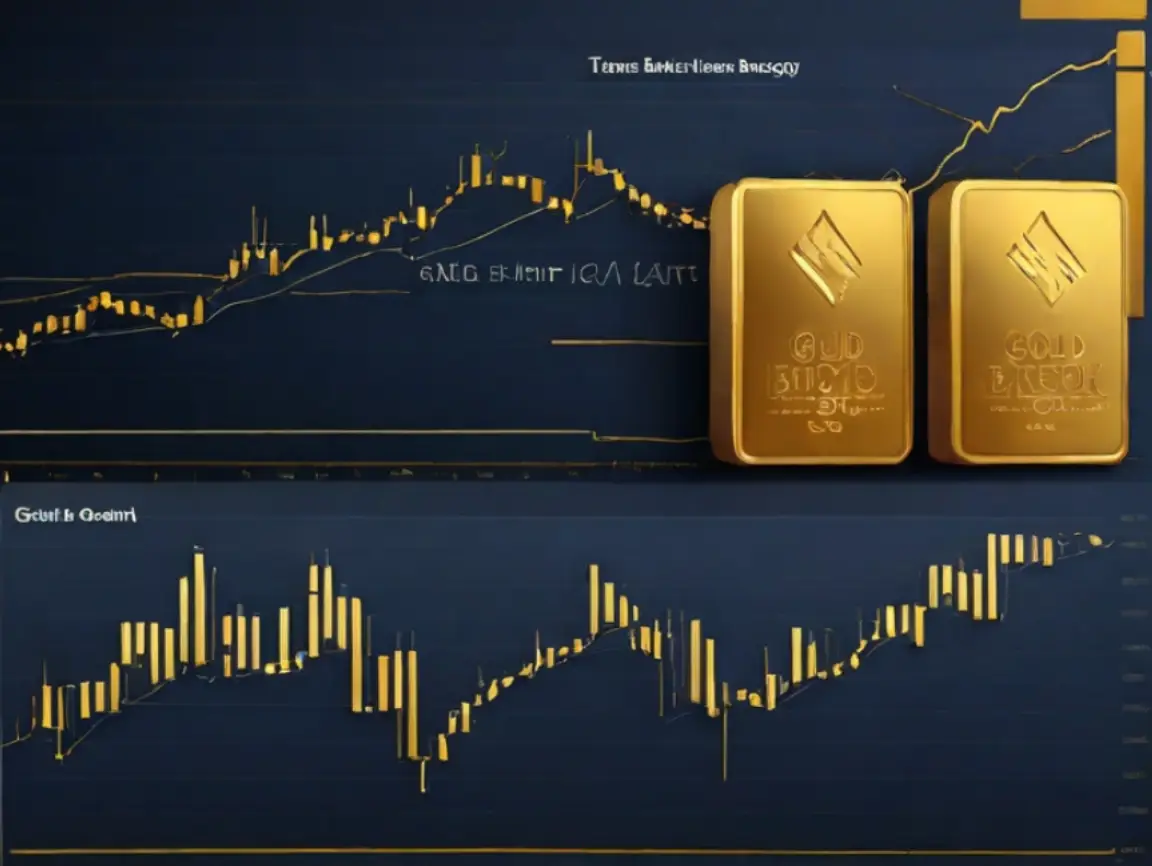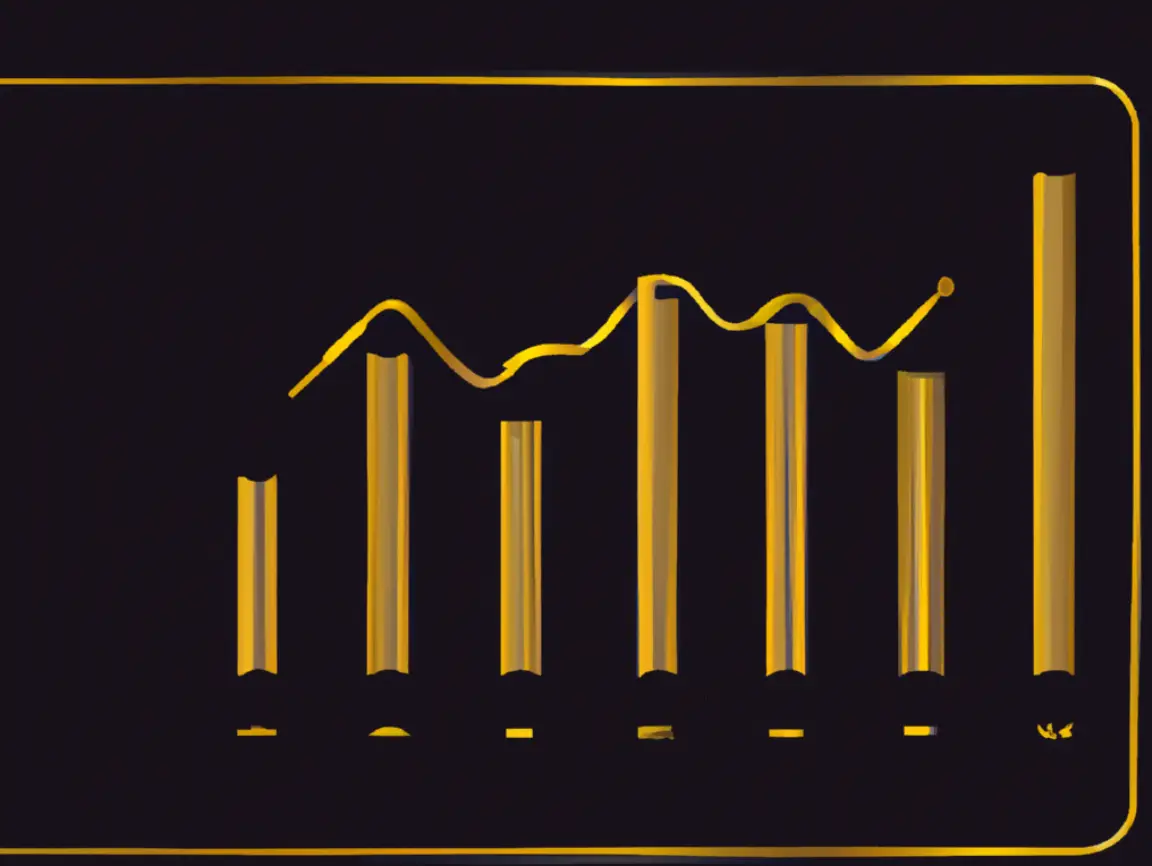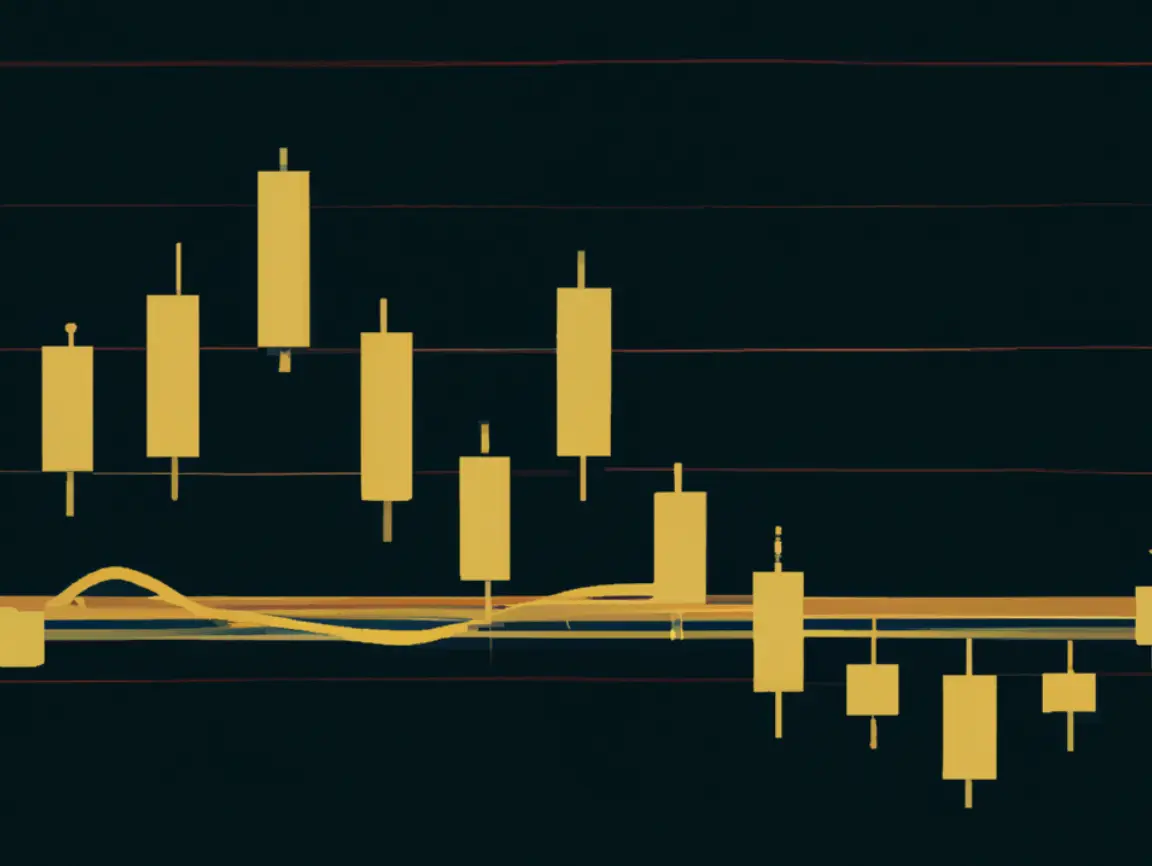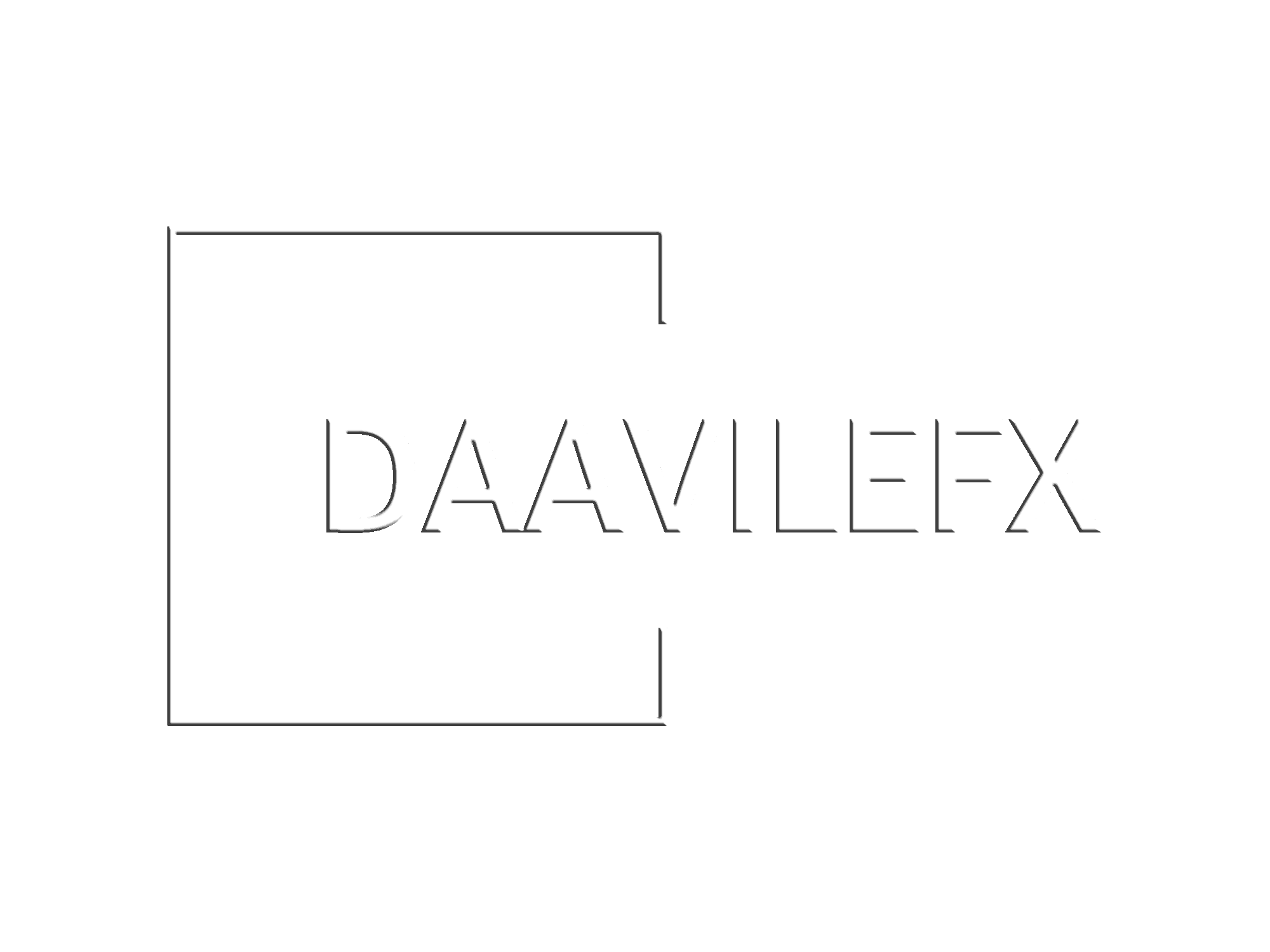Understanding Gold (XAU/USD) and the U.S. Economy: A Weekly Recap “Profits follow discipline—control your emotions, follow your strategy, and let the market do the rest.” Can gold predict the future of the U.S. economy? While it’s not a crystal ball, its price movements offer valuable clues about investor sentiment, inflation expectations, and the overall health of the market. This week, the headline is “gold down, economy strong,” but the full story is more nuanced. This recap of XAU/USD price action, combined with a look at crucial economic indicators, reveals a landscape of expanding business activity, low unemployment, and a Federal Reserve focused on keeping inflation in check. Want to understand where the U.S. economy is headed? One of the best places to look is the gold market. This week’s XAU/USD analysis, coupled with a breakdown of major economic releases, provides valuable insights for traders and investors. From FOMC minutes to presidential speeches, we’ll cover the events that moved the market and what they mean for your portfolio. Join me as we unpack the key events and their implications, giving you the insights you need to stay ahead of the curve. Gold (XAU/USD) has long been a barometer of economic sentiment, reflecting shifts in risk appetite, inflation expectations, and monetary policy. Analyzing gold prices alongside U.S. economic data allows us to uncover valuable insights into both macroeconomic trends and micro-level market behavior. The Big Picture: Gold, the U.S. Economy, and Future Cycles Last week’s data painted a picture of a resilient U.S. economy, with low unemployment, expanding business activity, and a hawkish-leaning Fed. Gold’s slight decline (-0.11%) reflects this optimism, as investors favored risk assets over safe havens. This week’s recap highlights how gold responded to key events, offering a lens into the broader economic landscape. Key Takeaways: Gold as an Economic Indicator: Gold’s performance often signals shifts in risk sentiment and inflation expectations. Last week’s stability and slight decline suggest confidence in the U.S. economy. Macro Insights: Strong labor data and PMI readings point to continued economic expansion, while the Fed’s hawkish tone underscores a focus on inflation control. Micro-Level Analysis: Presidential speeches, while influential, did not disrupt the broader economic narrative, highlighting the importance of data-driven trends over short-term rhetoric. By understanding these dynamics, traders and investors can better anticipate future economic cycles and position themselves accordingly. Gold remains a critical tool for navigating both macroeconomic trends and micro-level market behavior. Sunday, February 16 – No Red Folder Event What Happened: No significant U.S. economic data or events were released. Markets remained quiet, reflecting a typical low-volatility weekend. Gold & Economic Implications: Gold prices held steady, signaling a neutral market sentiment. With no catalysts to drive risk-on or risk-off behavior, the U.S. economy remained in a holding pattern, neither gaining nor losing momentum. Monday, February 17 – No Red Folder Event What Happened: Another uneventful day with no major economic reports or speeches. Markets continued to trade in a narrow range. Gold & Economic Implications: Gold prices showed minimal movement, maintaining the stability seen on Sunday. The lack of volatility reinforced a neutral outlook for the U.S. economy, with no immediate pressures or catalysts to alter the status quo. Tuesday, February 18 – President Trump Speaks (3:13 PM & 8:00 PM) What Happened: President Trump delivered two speeches, touching on trade, jobs, and the U.S. dollar. His remarks often influence market sentiment, as hints of economic uncertainty or dollar weakness can drive investors toward gold as a safe haven. Gold & Economic Implications: Gold ended the week down 0.11% by February 21, suggesting that Trump’s speeches did not trigger significant safe-haven demand. This indicates a lack of immediate economic concerns, with markets interpreting his comments as neutral to slightly positive for the U.S. economy. Wednesday, February 19 – FOMC Meeting Minutes (1:00 PM) & President Trump Speaks (4:00 PM) What Happened: The Federal Reserve released its FOMC meeting minutes, providing insights into interest rate policy and inflation outlook. Higher rates typically weigh on gold, as they boost the dollar and bond yields, while dovish signals support gold prices. Trump’s speech later in the day added another layer of market sentiment. Gold & Economic Implications: Gold prices dipped slightly, suggesting the Fed’s tone may have leaned hawkish, hinting at potential rate hikes. This is a positive sign for the U.S. economy, as it reflects confidence in controlling inflation. However, it creates headwinds for gold. Trump’s speech did not significantly alter the narrative, leaving gold modestly lower. Thursday, February 20 – Unemployment Claims (7:30 AM) & President Trump Speaks (6:20 PM) What Happened: Unemployment claims came in at 214K, below the threshold that signals labor market strength. Low claims typically indicate a robust job market, reducing the appeal of gold as a safe haven. Trump’s evening speech added further context to the day’s economic narrative. Gold & Economic Implications: The low unemployment figure is a clear positive for the U.S. economy, reflecting strong job creation. Gold prices edged lower, likely due to a stronger dollar and reduced safe-haven demand. Trump’s remarks did not disrupt the overall positive sentiment, reinforcing the economy’s stability. Friday, February 21 – Flash Manufacturing PMI (8:45 AM), Flash Services PMI (8:45 AM) & President Trump Speaks (2:56 PM) What Happened: The Flash Manufacturing PMI registered 51.2, while the Flash Services PMI came in at 52.9. Both figures above 50 indicate expansion, signaling healthy business activity. Trump’s afternoon speech provided additional market context. Gold & Economic Implications: Strong PMI readings are another positive indicator for the U.S. economy, suggesting robust growth in both manufacturing and services sectors. Gold prices closed the week down 0.11%, likely pressured by a stronger dollar and profit-taking. Trump’s speech did not significantly impact the market, leaving gold’s downtrend intact. NEXT WEEK US RED FOLDER Global Markets “The Week That Was, The Week Ahead: Macro & Markets, February 23, 2025” U.S. stock indices closed in the red last week, with the Dow Jones down 2.51% and the S&P 500 losing 1.66%.
WHY LEVERAGE MATTERS: UNDERSTANDING KEY ELEMENTS IN FOREX TRADING
The concept of leverage plays a fundamental role in investors’ success. But what exactly is leverage and why is it so important? In this article, we will explore these key aspects of forex trading to provide you with a clear and concise understanding. Leverage is a fundamental tool in forex trading that allows you to control larger positions with a smaller capital. In other words, it enables you to multiply your buying power. “Profits follow discipline—control your emotions, follow your strategy, and let the market do the rest.” Example: You have $1000 in your trading account. You use a leverage of 100:1. You can open a position of $100,000 (1000 x 100). Benefits of leverage: Higher potential profits: With a small capital, you can achieve significant gains. Access to larger markets: You can trade in markets that you otherwise couldn’t. Greater efficiency: You reduce the need to invest large amounts of money. Risks of leverage: Higher potential losses: If the market moves against you, you can lose more money than you invested. Higher risk of margin call: If your account doesn’t have enough capital to cover losses, you may be forced to close your position. Key elements of leverage: Leverage ratio: The amount by which your capital is multiplied. Margin: The amount of money you need in your account to open a position. Stop loss level: A predetermined price at which your position is closed to limit losses. Example 1 with EURUSD: Suppose EUR/USD is quoted at 1.1000, and you decide to buy 10,000 euros. Without leverage, you would need $11,000 in your account (10,000 euros x 1.1000). With a leverage of 100:1, you only need $110 in your account (10,000 euros / 100). Example 2 with XAUUSD: Suppose XAUUSD (gold against the US dollar) is quoted at $1800 per ounce, and you decide to buy 10 ounces of gold. Without leverage, you would need $18,000 in your account (10 ounces x $1800 per ounce). With a leverage of 50:1, you only need $360 in your account (10 ounces / 50). Note: The maximum leverage for XAUUSD varies by broker. It is important to consider the risks of leverage before using it. Example 2 with GBPUSD: Suppose GBP/USD is quoted at 1.3000, and you decide to sell 10,000 pounds. Without leverage, you would need $13,000 in your account (10,000 pounds x 1.3000). With a leverage of 50:1, you only need $260 in your account (10,000 pounds / 50). Backtesting and trading strategies with leverage: Backtesting or strategy tester on platforms like MT4 allows you to test trading strategies on historical market data. You can use a code/algorithm to automate your strategy and evaluate its performance under different conditions, including leverage, for free. Modeling margin with different leverage levels: When backtesting with different leverage levels, you can: Observe how the risk and reward of your strategy change. Optimize leverage to maximize performance. Determine the appropriate position size for your account and risk tolerance. Knowing the limits and risks of the account: Backtesting helps you understand: The maximum drawdown your account can withstand. The number of lots you can open with a certain balance and leverage. The risk of margin call and stop out. Margin call and stop out: Margin call is a warning from the broker when the capital in your account falls to a minimum level. If you do not deposit more funds, the broker may automatically close your positions (stop out) to cover their losses. Over-leveraging and margin call: Using excessive leverage can lead to a rapid loss of capital and a margin call in a matter of seconds. Example: Let’s say you have an account with $1000 and decide to open a position of $100,000 with a leverage of 100:1. If the market moves against you by 1%, your account will lose $1000, triggering a margin call. Conclusion: Backtesting with different leverage levels is a powerful tool to improve your trading strategy and understand the risks involved. It allows you to optimize leverage usage to maximize performance and minimize the risk of financial disaster due to a margin call. ✅Open account with my broker & cent accounts 🌟https://my.teletrade.org/agent_pp.html?agent_pp=28108017 🤝DAAVILE Affiliate ID: 28108017 🌟 Ready to trade with RoboForex? Visit: https://my.roboforex.com/en/?a=mufn. 🤝 DAAVILE Forex EA and Affiliate Link: mufn. 📊FOREX VPS FOR ALGO TRADING 🔥IDEAL TO RUN TERMINALS 24/7 WITH NO NEED OF HAVING A PC TURNED ONALL THE TIME. ✅USE MY LINK FOR AN EXCLUSIVE DISCOUNThttps://portal.forexcheapvps.com/aff.php?aff=3134
Real accounts types FOREX – Quick break down
Forex Real Account Types: Understanding Market Maker vs. Non-Market Maker and Choosing the Right Account Introduction Forex brokers offer various account types, with fundamental differences in execution methods, fees, and access to market liquidity. The two primary broker types—Market Makers and Non-Market Makers—each operate uniquely, affecting trading costs and order handling. In this guide, we’ll break down these broker models, review real account types like ECN, Standard, Non-Dealing Desk (NDD), and Cent accounts, and highlight the features to consider based on your trading style. “Trading isn’t about predicting the future, it’s about managing risk and maximizing opportunity.” 1. Market Makers vs. Non-Market Makers Market Makers (MM): These brokers create a market by acting as the counterparty to client trades, filling orders “in-house” rather than through direct market access. Since Market Makers profit from spreads, they may offer wider spreads than direct market access models. While some traders prefer the convenience and cost-effectiveness of Market Makers, these brokers might have conflicts of interest, as they stand to gain from trader losses. However, for beginners or long-term investors, Market Maker accounts can be affordable and reliable. Non-Market Makers (ECN, NDD, STP): Non-Market Makers don’t take the opposite side of trades. Instead, they pass orders directly to liquidity providers (such as banks and other financial institutions), allowing traders access to interbank pricing with tighter spreads. These brokers earn through commissions, with transparent order execution that appeals to scalpers, high-frequency traders, and technical traders who prioritize lower spreads and reliable market access. 3. Understanding Each Account Type Standard Accounts: Suitable for beginners and long-term traders. Market Makers handle orders in-house, allowing them to offer more stable pricing and no commission fees, though spreads may be higher. Standard accounts usually include overnight swap fees. ECN Accounts: Direct to interbank liquidity, ideal for high-frequency traders and scalpers who need ultra-tight spreads. ECN accounts typically charge commissions per trade, making them best for those trading in high volumes or frequent intervals. NDD Accounts: Non-Dealing Desk (NDD) accounts avoid broker interference, connecting directly to liquidity providers with variable spreads and, in some cases, lower commissions than ECN. NDD accounts are flexible for technical and news-based traders. Cent Accounts: Cent accounts convert balances to cents, minimizing exposure and allowing real-market testing with small amounts. Ideal for new traders moving from demo to live trading or for testing high-risk strategies. 4. Choosing the Right Account for Your Trading Style Demo and Real Accounts: Beginners benefit from starting with demo accounts to practice trading without risk, then transitioning to Cent accounts for real-market exposure with low financial risk. Backtesting with Algos: Algorithmic trading in demo or cent accounts allows efficient testing of strategies and rapid data collection, helping to refine trading methods. Backtesting on these accounts provides valuable insights without the psychological impact of real trading. Leverage Options: Consider the leverage offered—up to 1:500 with TeleTrade and 1:2000 with RoboForex—based on your risk tolerance. Conclusion Choosing between Market Maker and Non-Market Maker brokers, as well as among account types, depends on your trading goals, frequency, and budget. Beginners and those testing strategies may prefer Standard or Cent accounts, while experienced traders looking for precision will find value in ECN and NDD accounts. By understanding account types and features, traders can better match their trading style with optimal account conditions. ✅Open account with my broker & cent accounts 🌟https://my.teletrade.org/agent_pp.html?agent_pp=28108017 🤝DAAVILE Affiliate ID: 28108017 🌟 Ready to trade with RoboForex? Visit: https://my.roboforex.com/en/?a=mufn. 🤝 DAAVILE Forex EA and Affiliate Link: mufn. 📊FOREX VPS FOR ALGO TRADING 🔥IDEAL TO RUN TERMINALS 24/7 WITH NO NEED OF HAVING A PC TURNED ONALL THE TIME. ✅USE MY LINK FOR AN EXCLUSIVE DISCOUNThttps://portal.forexcheapvps.com/aff.php?aff=3134
Demo vs Real vs Backtesting accounts FOREX
In Forex trading, the journey to becoming proficient often begins with understanding the importance of Demo, Real, and Backtesting accounts. Platforms like TeleTrade and RoboForex offer traders a variety of options to fit their goals, whether they are testing new strategies, analyzing historical data, or making live trades. In this guide, we will explore how each type of account serves a specific purpose, and how traders can use these tools to optimize their experience, performance, and strategy. “Consistency in trading beats luck—strategy, risk management, and patience build real wealth.” 1. Demo Accounts: The Sandbox for Experimentation Demo accounts simulate real time trading conditions without the financial risk, making them invaluable for beginners, intermediate traders, and even experts testing new strategies. Key Benefits of Demo Accounts: Risk-Free Learning: Demo accounts let traders practice without risking real capital, making them ideal for beginners who want to learn market mechanics or test different tools and indicators. Access to Real-Time Data: Both TeleTrade and RoboForex provide demo accounts that replicate live market conditions, complete with fluctuating spreads and dynamic price movements. Testing Strategies: Demo accounts allow traders to experiment with strategies and understand risk management tools like leverage without financial consequences. Tools and Platform Familiarization: Demo accounts help users get comfortable with the platform’s features, such as charting, indicators, and order types, making the transition to live trading smoother. Limitations to Consider: Emotion and Risk Management: Since there’s no real financial risk, demo trading often lacks the emotional intensity that affects decision-making in live trading. Execution Differences: Some execution features, like slippage and spread adjustments, may differ slightly in demo accounts compared to live trading. Who Should Use Demo Accounts? Demo accounts are suited for beginners exploring Forex trading, traders developing new strategies, or advanced traders fine-tuning their algorithms. They’re especially valuable for anyone working with automated strategies or learning to interpret technical analysis. 2. Real Accounts: Putting Knowledge into Practice Real accounts provide a genuine trading experience with real money at stake, allowing traders to apply their strategies in an authentic, risk-bearing environment. TeleTrade and RoboForex offer various real account types, each suited to different trading styles and risk tolerances. Types of Real Accounts on TeleTrade and RoboForex: Standard Accounts: Ideal for traditional trading with either fixed or variable spreads. These accounts usually don’t charge commissions, making them suitable for long-term traders. ECN Accounts: For high-frequency or short-term traders, ECN (Electronic Communication Network) accounts offer tight spreads and faster order execution due to direct access to interbank liquidity. Cent Accounts: Perfect for risk-averse traders or beginners transitioning from demo accounts, cent accounts allow trading in micro-units, making them a safer, less capital-intensive option for real market exposure. Non-Dealing Desk (NDD) Accounts: These accounts bypass dealing desks, letting orders flow directly to liquidity providers for transparent and efficient execution. Perks of Real Accounts: Real-World Experience and Emotional Training: Unlike demo accounts, trading with real money triggers emotional responses like fear and excitement, helping traders build the discipline to manage psychological aspects. Actual Market Conditions: Real accounts reflect true trading conditions, including spreads, slippage, and any liquidity-based changes. While TeleTrade offers leverage up to 1:500 and RoboForex up to 1:2000, users must manage their risk carefully to avoid over-leveraging. Strategy and Account Performance Tracking: Real accounts provide traders with valuable metrics like monthly return percentages, drawdowns, and win/loss ratios, offering insights into their strategy’s effectiveness. Who Should Use Real Accounts? Traders with a developed strategy, preferably validated through demo and backtesting, should consider real accounts. These are also ideal for those who want to test their emotional resilience in a true market environment or who seek long-term portfolio building, as well as advanced traders focused on high-risk, high-reward strategies. 3. Backtesting: The Foundation of Algorithmic Reliability Backtesting allows traders to analyze historical data to evaluate how well a strategy would have performed under past market conditions. This data-driven approach is especially beneficial for traders using EAs (Expert Advisors) or algorithmic strategies. Why Backtesting Is Essential in Forex: Data-Driven Decision Making: Backtesting eliminates guesswork by providing statistically significant results. Instead of relying on probability, traders can fine-tune strategies based on past performance. Stress Testing Across Market Conditions: With tools like the Strategy Tester available in MT4 and MT5 on TeleTrade and RoboForex, traders can simulate how a strategy would perform across market events like the 2008 financial crisis, 2013 gold crash, and 2020 COVID-19 volatility. Algorithmic Efficiency: Algorithms are particularly useful for backtesting since they can process extensive data sets and multiple trading parameters, allowing for thorough, unbiased analysis of a strategy’s profitability and resilience. Limitations of Backtesting to Be Aware Of: Historical Conditions Are Not Always Future Conditions: While backtesting uses past data, it’s essential to forward-test a strategy (discussed below) to ensure it remains effective in the current market environment. Quality of Data: To get accurate results, using real tick data and high-quality historical data is essential, which both TeleTrade and RoboForex provide to enhance the reliability of the backtest. Who Should Use Backtesting? Backtesting is essential for traders who use EAs or wish to develop algorithmic strategies. It’s also valuable for traders with a technical approach who want to optimize and validate strategies without live-market exposure. 4. Forward Testing and Strategy Optimization Forward Testing is the phase where a strategy is tested in a demo account under live market conditions after being validated through backtesting. This approach helps bridge the gap between theoretical data and actual market conditions, providing additional reliability before implementing a strategy on a real account. Steps to Effective Forward Testing: Set Up the Strategy in Demo Mode: Run the strategy in a demo account with identical parameters as used in backtesting. Monitor Performance Metrics: Track performance in real-time, analyzing drawdowns, slippage, and execution quality. This data will help you understand how a strategy might react to current market conditions. Optimize and Refine: Use any deviations from expected performance to adjust and optimize the strategy further, ensuring it’s ready for live trading. 5. Matching Traders to Their Ideal Account and
Downloading and Installing MT4
MetaTrader 4 (MT4) and MetaTrader 5 (MT5) are essential trading platforms widely used for trading Forex, indices, commodities, and more. They offer extensive tools, including advanced charting, multiple timeframes, and customizable indicators. The PC versions of MT4 and MT5 are particularly powerful, as they fully support Expert Advisors (EAs) for automated trading, which isn’t possible on mobile versions. If you’re using EAs, a PC setup is necessary. “Trading isn’t about predicting the future, it’s about managing risk and maximizing opportunity.” Tutorial: Downloading and Installing MT4/MT5 for TeleTrade Step 1: Access TeleTrade’s Trading Platforms Page Visit TeleTrade’s MT4 download page here: https://www.teletrade.org/trading/trading-platforms/metatrader-windows Step 2: Select MetaTrader 4 or MetaTrader 5 Choose between MT4 or MT5 based on your trading preferences. MT4 is ideal for Forex and EA compatibility, while MT5 supports more asset classes. Click on the Download button for the platform you want. Step 3: Download the Platform Save the installer file to a convenient location on your PC. Step 4: Install MT4/MT5 Run the installer file and follow the on-screen steps to complete the installation. You can choose a custom installation folder if you want. Step 5: Log in to Your TeleTrade Account Open MT4/MT5 and go to File > Login to Trade Account. Enter your TeleTrade credentials and select the correct server from the list. Extra Tips for TeleTrade MT4/MT5: Shortcut Tips: Use F9 for quick orders or Ctrl+T to toggle the Terminal window. Chart Customization: Right-click on charts to set properties, add indicators, and save your custom chart layouts for quick access. Tutorial: Downloading and Installing MT4/MT5 for RoboForex Step 1: Visit RoboForex’s MT4/MT5 Platform Page Use these links to access RoboForex’s platform pages: MT4: https://roboforex.com/es/forex-trading/platforms/metatrader4-mt4/ MT5: https://roboforex.com/es/forex-trading/platforms/metatrader5-mt5/ Step 2: Choose MT4 or MT5 Click on the Download button under your chosen platform. MT4 is designed for standard Forex trading, while MT5 includes additional features like more order types and market depth. Step 3: Download the Platform Save the installer to your preferred folder. Step 4: Install MT4/MT5 Open the installer file, follow the installation steps, and choose a custom folder if necessary. Step 5: Log in to Your RoboForex Account Launch MT4/MT5, go to File > Login to Trade Account, and enter your RoboForex login information. Select the appropriate server for your account type. Extra Tips for RoboForex MT4/MT5: One-Click Trading: Activate one-click trading for fast order execution by right-clicking on a chart and selecting this option. Backtesting and Optimization: MT4 and MT5 support backtesting and optimization of EAs, allowing you to test your strategies on historical data. ✅Open account with my broker & cent accounts 🌟https://my.teletrade.org/agent_pp.html?agent_pp=28108017 🤝DAAVILE Affiliate ID: 28108017 🌟 Ready to trade with RoboForex? Visit: https://my.roboforex.com/en/?a=mufn. 🤝 DAAVILE Forex EA and Affiliate Link: mufn. 📊FOREX VPS FOR ALGO TRADING 🔥IDEAL TO RUN TERMINALS 24/7 WITH NO NEED OF HAVING A PC TURNED ONALL THE TIME. ✅USE MY LINK FOR AN EXCLUSIVE DISCOUNThttps://portal.forexcheapvps.com/aff.php?aff=3134
FREE Next level tool for backtesters -HISTORY DOWNLOADER
Download link: https://www.mql5.com/en/market/product/96307?source=Site+Market+MT4+Utility+Free+Rating006#description MT4 History Loader: Quick Breakdown 🔍 Developer & Version: Name: Alain Verleyen Version: 1.12 📋 What It Does: Automates downloading historical data for all symbols and timeframes from your broker’s server. Saves time by avoiding manual data download processes. ⚙️ How It Works: Drop the EA on any chart in MT4. Choose the symbols and timeframes in the input settings. The EA automates the download and logs progress in the Experts log. 📌 Important Notes: Data download depends on your broker’s available historical data. Adjust MT4 settings: “Max bars in History” “Max bars in Chart” Higher values fetch more data but can reduce platform performance. 🎯 Best For: Preparing data for indicators or multi-symbol/multi-timeframe EAs. Fully automates the process, saving hours of manual setup. Use responsibly, as excessive data loads may slow down your platform. 🛠️ 📊 MT4 History Loader: Automate Your Data Downloads! Save time and skip the hassle of manual data downloads in MetaTrader 4 with the MT4 History Loader! This free tool automates the process, letting you quickly grab historical data for all symbols and timeframes you need. What You’ll Learn: Installing and using the History Loader. Automating multi-symbol and multi-timeframe data downloads. Adjusting MT4 settings for maximum data without performance issues. Perfect for backtesting, strategy building, and multi-timeframe analysis. Don’t waste time—let this tool do the heavy lifting for you! Download here: https://www.mql5.com/en/market/product/96307 “Profits follow discipline—control your emotions, follow your strategy, and let the market do the rest.” ✅Open account with my broker & cent accounts 🌟https://my.teletrade.org/agent_pp.html?agent_pp=28108017 🤝DAAVILE Affiliate ID: 28108017 🌟 Ready to trade with RoboForex? Visit: https://my.roboforex.com/en/?a=mufn. 🤝 DAAVILE Forex EA and Affiliate Link: mufn. 📊FOREX VPS FOR ALGO TRADING 🔥IDEAL TO RUN TERMINALS 24/7 WITH NO NEED OF HAVING A PC TURNED ONALL THE TIME. ✅USE MY LINK FOR AN EXCLUSIVE DISCOUNThttps://portal.forexcheapvps.com/aff.php?aff=3134 Discord Server: https://discord.gg/ma7ab8wmeN
Opening, Connecting & Configuring a trading Account
Setting up a trading account with TeleTrade or RoboForex provides you with access to robust trading environments tailored to various needs and experience levels. This guide will walk you through the differences between live and demo accounts, highlight benefits such as the strategy tester and free tick data, and explain account types and leverage options. “Consistency in trading beats occasional brilliance—manage risk, stay disciplined, and let the edge play out.” Live vs. Demo Accounts and Strategy Tester Access Demo Accounts: These accounts are ideal for new traders or those looking to test strategies without risking real money. Demo accounts simulate real trading conditions using virtual funds, so you can access all market features like charting, technical analysis tools, and live price feeds. Both brokers offer unlimited demo account setups, letting you test various configurations or risk parameters. Live Accounts: Designed for actual trading with real money, live accounts allow you to participate in real-time market environments. When using a live account, all trades impact your balance with actual profits or losses, and you experience the true market conditions, including spreads, slippage, and trading fees. Perks of the Strategy Tester and Free Tick Data: In both demo and live accounts on MT4 and MT5, the Strategy Tester is a powerful tool allowing you to backtest your EAs or trading strategies using historical data. Free tick data lets you simulate past market conditions, making it possible to evaluate strategy performance across different scenarios and account types, and ensuring that your approach is optimized before live trading. Account Types: ECN, Cent, Non-Dealing Desk, and Standard Accounts Both TeleTrade and RoboForex provide various account types to suit diverse trading needs and goals: ECN Accounts: These are ideal for traders looking for tighter spreads and lower trading costs, as ECN (Electronic Communication Network) accounts directly connect traders to the interbank market. There is no dealing desk, which means orders are filled based on the best available market price, making ECN accounts optimal for strategies that benefit from minimal spread. Cent Accounts: A unique feature of Cent Accounts is their ability to trade in cents rather than standard dollars, making them an excellent choice for beginners or those who want to practice with very low risk. While cent accounts often have higher spreads, they let traders operate in a live market setting with significantly lower monetary exposure. Non-Dealing Desk (NDD) Accounts: Non-dealing desk accounts bypass broker intervention and are typically suited for high-frequency traders or scalpers. NDD accounts rely on automated order filling based on market depth, ensuring better transparency and faster execution, particularly advantageous for volatile markets. Standard Accounts: A more traditional option, standard accounts offer fixed or variable spreads and are often commission-free, with the broker earning from the spread difference. Standard accounts may be easier to manage for long-term and swing traders as they often come with simpler terms. Leverage Options Leverage is an essential aspect of forex trading that can significantly impact trade size and potential profit: TeleTrade offers leverage up to 1:500, which allows traders to control a large position with a smaller margin. This leverage suits most trading styles while providing a balance between risk and opportunity. RoboForex provides higher leverage up to 1:2000, giving experienced traders more power to open substantial positions with smaller capital. Higher leverage can amplify both potential gains and losses, so it’s advised for traders familiar with risk management. Step-by-Step Guide to Opening, Connecting, and Configuring a Trading Account TeleTrade: Account Opening and Connection Register: Go to TeleTrade’s registration page at https://www.teletrade.org/registration and fill out the form with your basic information. Account Verification: Submit identification and proof of address documents to comply with KYC regulations. Select Account Type: Choose between Demo, Standard, ECN, or other options based on your strategy and risk tolerance. Set Leverage: Choose your desired leverage up to 1:500. Remember that higher leverage increases both potential profit and risk. Download and Configure MT4 or MT5: Download the MetaTrader terminal from TeleTrade’s platform page for Windows or macOS. Open MT4 or MT5, go to File > Login to Trade Account, and enter your account credentials. Explore Features: With your account connected, you can start trading or use the Strategy Tester on demo accounts to refine your strategies using free tick data for precise historical testing. RoboForex: Account Opening and Connection Begin Registration: Visit RoboForex’s registration page at https://roboforex.com/es/forex-trading/register and complete the registration form. Verification: Upload a valid ID and proof of address to activate your account and comply with regulatory requirements. Choose an Account Type: Select an account type (e.g., Cent, ECN, Standard, NDD) based on your trading strategy. RoboForex’s Cent Accounts are particularly useful for beginners. Leverage Selection: RoboForex offers leverage up to 1:2000, which can be selected during account setup. Adjust based on your comfort level with risk. Install MT4 or MT5 and Connect: Download MT4 or MT5 from the RoboForex website: MT4: https://roboforex.com/es/forex-trading/platforms/metatrader4-mt4/ MT5: https://roboforex.com/es/forex-trading/platforms/metatrader5-mt5/ Open the platform and log in via File > Login to Trade Account, using your credentials to connect your RoboForex account. Utilize Demo or Live Features: Access demo trading or switch to live mode and use the Strategy Tester with free tick data to optimize your EA and trading strategies.
Guide to Opening an Account with RoboForex
Why Choose RoboForex? 📅 Established Experience: Operating since 2009, with over a decade of experience in financial markets. 🌍 Global Reach: RoboForex serves traders in over 169 countries, with multilingual support for seamless communication. ✔️ Regulations: Registered under IFSC Belize (License No. 000138/333), ensuring safety and transparency. 💼 Account Types: Variety of accounts including Cent, ECN, and Standard for beginners and professionals. 💸 Perks: Welcome Bonus: Up to $30 for new users. Leverage Options: Up to 1:2000, perfect for diverse trading strategies. Free VPS: Available for accounts meeting specific criteria. “Success in business is not about working harder, but about working smarter and creating value that outlasts you.” Step-by-Step: Opening Your Broker Account 🔗 Visit the Website: Go to https://my.roboforex.com/en/?a=mufn 🖋️ Registration: Click “Open an Account” and fill in basic details: Name Email Phone number 📧 Email Verification: Check your inbox for the confirmation email and click the link provided to verify your email address. 📋 Complete Your Profile: Add detailed personal information, including: Date of Birth Residential Address 📂 Document Upload for Verification: Proof of Identity: Passport, national ID, or driver’s license. Proof of Address: Utility bill, bank statement, or official document (dated within 3 months). ✅ Approval: Once documents are verified, your account setup is complete, and you can proceed to open trading accounts. Opening a Trading Account Step-by-Step: Demo and Real Accounts 1. Choosing the Right Account Type Demo Account: Perfect for beginners to practice risk-free. Choose demo options in Cent, Standard, or ECN accounts for simulation. Live Account: Start trading in real markets. Recommended accounts: Cent Account: Low risk, ideal for beginners with small deposits. ECN Account: Tight spreads and direct market access for professionals. 2. Platform Selection MetaTrader 4 (MT4): Ideal for beginners with extensive tutorials and resources. MetaTrader 5 (MT5): Advanced tools for experts, offering more asset options and functionalities. 3. Deposit Options 💳 Deposit Methods: Bank Transfers Credit/Debit Cards E-wallets (Skrill, Neteller, etc.) Crypto Local deposits Deposit Recommendations: Start with $100 or more to explore multiple strategies. Use Cent accounts for less risk and more buying power. 4. Account Optimization Tips Leverage Management: For trading: 1:500 or higher for flexibility. For investing: 1:100 for safety. Use Filters & EAs: Algorithmic Trading: Automate strategies with expert advisors (EAs) like DAAVILE Forex EA, tailored for XAUUSD and other assets. Why DAAVILE? 🤖 Automated Trading: Fully automated EA to save time and effort. 📈 Proven Results: Designed to maximize profits in real-time conditions. 🌐 Community Support: Access to the first money-making Discord server, fostering a non-toxic, helpful environment for all traders. Get Started Today! 🌟 Ready to trade with RoboForex? Visit: https://my.roboforex.com/en/?a=mufn. 🤝 DAAVILE Forex EA and Affiliate Link: mufn.
HOW TO OPEN BROKER & TRADING ACCOUNT – TELETRADE EDITION
Ready to Get Started with Trading and Investing? Let’s Keep It Simple. Hey there! If you’re looking to kickstart your trading journey, TeleTrade has got you covered. Setting up your account is a breeze—no complicated steps, no stress. We’ll guide you through it so you can focus on what really matters: growing your money and making smart trades. Let’s jump in and get you all set up. “Trading isn’t about predicting the future—it’s about managing risk and maximizing opportunity.” 1.Opening a Broker Account Visit the Website: Start by visiting TeleTrade’s official website and click on the “Open Account” button. Registration: Fill out the registration form with your personal details (name, email, phone number, etc.). Email Verification: Confirm your email address by clicking on the link sent to your inbox. Complete Profile: Provide detailed information like your address, date of birth, and other personal data. Document Upload: For identity verification, you’ll need to submit: Proof of Identity: Passport, national ID, or driver’s license. Proof of Address: Utility bill, bank statement, or another official document with your name and address. 2. Opening a Trading Account Account Selection: Once your broker account is verified, choose your preferred trading account type. Recommendation: Opt for an NDD (No Dealing Desk) cent account to protect your investment by increasing your margin and buying power. Platform Choice: Select the trading platform you want to use (MetaTrader 4 or 5). You can open either a live account for real trading or a demo account for practice. Fund Your Account: Deposit funds using available options like bank transfer, credit card, or e-wallets. Begin Trading: After funding, you can start trading in various instruments (forex, CFDs, etc.). 3. Recommendations Leverage Management: Use leverage wisely. For trading strategies, optimize using a strategy tester with leverage up to 1:500. For investing strategies, consider a more conservative leverage of 1:100. Algorithmic Trading: Skip manual trading and harness the power of advanced algorithms to work your money. Consider using solutions like DAAVILE Forex EA to automate and optimize your trading strategies. DAAVILE LINK Link DAAVILE: https://my.teletrade.org/agent_pp.html?agent_pp=28108017 DAAVILE Affiliate ID: 28108017










